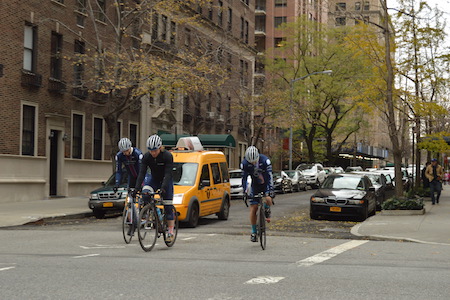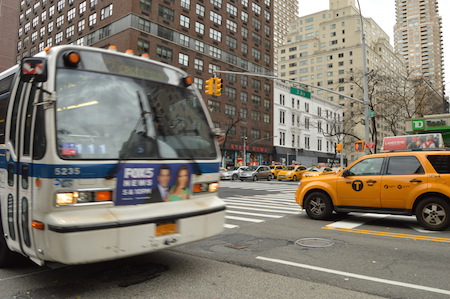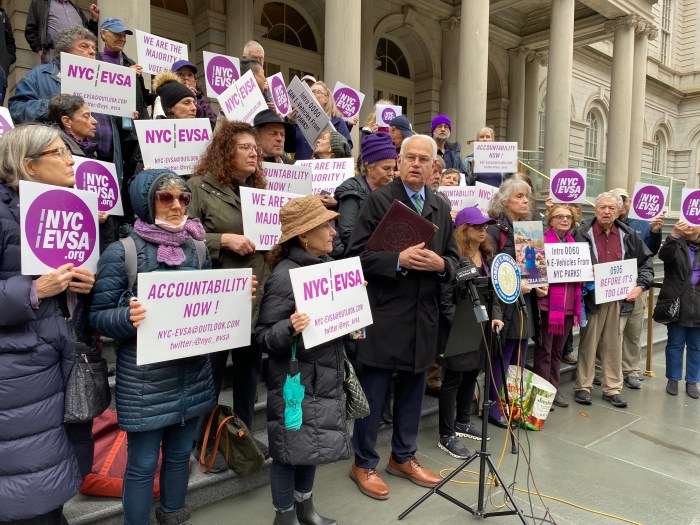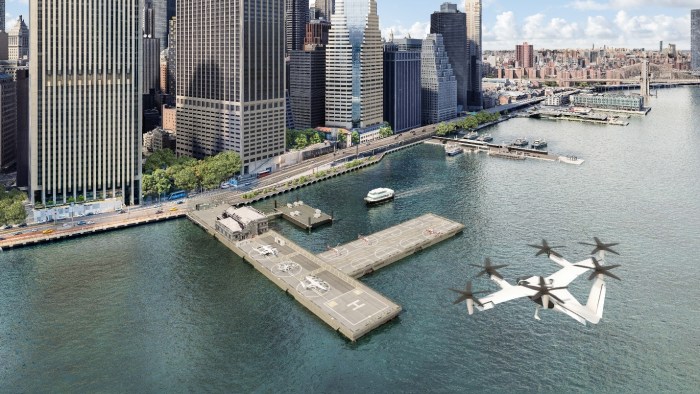
BY JACKSON CHEN | With calls for crosstown bike lanes rapidly growing on the Upper East Side, advocates for moving forward are looking to the city’s Department of Transportation to provide leadership.
In response to a swell of safety concerns from riders, Community Board 8, on November 12, passed a resolution acknowledging a need for crosstown bike lanes and requesting that the DOT assess the neighborhood to come up with some formal options.
For the short term, CB8 recommended that the DOT create painted crosstown bike lanes. The board also recommended that the department put together a longer-term plan for a network of crosstown bicycle routes on the Upper East Side that use the safest appropriate design.
While residents can traverse north and south with the First Avenue protected bike lane, their crosstown options are limited to painted, unprotected bike lanes on 90th and 91st Streets.
“As somebody who’s been cycling for many years, I’ve seen cycling go from extremely dangerous to being much less dangerous as protected bike lanes have increased,” said Hindy Schachter. “But if you want to go from east to west, there are no protected bike lanes.”
She said that such lanes would benefit everyone who uses the road because they provide clear visual border indications for both cars and bicycles. Schachter, whose husband was killed by a cyclist in August 2014, said the reallocation of space would promote safety for cyclists and pedestrians and ultimately lead to a more tranquil streetscape all around.
“I’m a cyclist, I’m a pedestrian, I’m a motorist,” she said. “In all three roles, I hope we will get protected bike lanes east to west.”
Following Schachter’s recounting of her personal experience, many cyclists echoed her call for a safe crosstown bike route for the neighborhood.
Lisa Cristal, an Upper East Sider who frequently bikes to the New School, said there is always a dreaded point in her commute where she has to decide which risky street to ride through when headed crosstown.
“When I have to go crosstown, I have to make a decision,” Cristal said, adding she frequently chooses Central Park South as her crosstown route. “But once I hit Fifth Avenue, it’s such a crowded corner and I’m just holding my breath until I get home.”
While most of CB8 and many residents in attendance were in favor of crosstown bike lanes, the minority opposition wanted more cyclist accountability and better police enforcement.
“I am vehemently, absolutely, unequivocally opposed to any bike lane whatsoever,” said CB8 Member Edward Hartzog. “The reason being is that until and when either this community board or this city or this mayor or somebody with some guts stands up and says where are the cops because there’s no enforcement.”
Despite six nay votes, the CB8 resolution passed handily with 32 votes in favor, but did not specify any streets in particular for the crosstown routes.

With few safe options for traveling east to the west or back, some community members have taken the task upon themselves to explore several streets for their feasibility in hosting a protected crosstown bike lane, including 72nd Street.
For Upper East Siders, the two-way street would allow access into Central Park and from there to the West Side. However, a 72nd Street bike lane caught criticism because of that street’s habitual state of congestion.
“I think crosstown bike lanes are a necessity, but having experienced a loved one having a horrific bike accident, the quieter one-way side streets are a much better option than a major street like 72nd,” said Merryl Sherman.
On top of the typical traffic of taxis and buses, Sherman said, Con Edison is constantly ripping up the street and leaving it in poor condition for everyone.
Besides 72nd Street, two bicyclist advocacy groups — Transportation Alternatives and Bike New York — conducted a “street scan” on October 17 where, with the assistance of volunteers, they surveyed two other sets of options: 61st and 62nd Streets and 67th and 68th Streets.
The survey results were submitted to local decision-makers and the DOT, according to the two non-profit groups. With enough community interest in creating protected crosstown bike lanes, the next step is for the DOT to come up with a proposal.
Officials from the department have indicated they are interested in creating crosstown bike lanes on the Upper East Side and will work with the community on a proposal in the coming months.




































